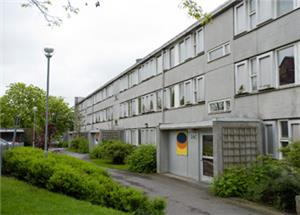Jan 30 2015
Retrofitting districts with sustainable energy systems can be a success if enough data is available to analyse the suitability of each chosen energy-saving solution
 Lund Cityfied
Lund Cityfied
Making a city or district energy smart is, first and foremost, an exercise in good planning. However, such green planning tools are still in their infancy. The trouble is that every city is different, every district unique. To replicate best practices for use in other context, it is important to develop models that can help better assess the actual source of energy savings. Scientists in Sweden have just started compiling such a virtual model, designed to calculate the energy saving potential of a district.
The model was initiated by the team of Anna Jarnehammar, director for business & market development at IVL, the Swedish Environmental Research Institute in Stockholm, Sweden. It has already been applied to a neighbourhood in Lund, Sweden. Now, IVL is also bringing its model to contribute to CITyFiED. "On a general level we can show how much carbon dioxide a district can avoid by implementing certain kinds of measures,” Jarnehammar tells CITyFiED.
In addition, the model gives an indication of how it might be possible to replicate the energy saving improvements, from one city to another. As input for the model, Jarnehammar's group uses data gathered from the three showcase districts of the project, located in Lund, Sweden, Laguna de Duero near Valladolid, Spain, and Soma, Western Turkey. This data, for example, includes construction details of houses, budget and development plans of the city councils and citizens' opinions. "Besides the technical part, we do interviews in order to really find out what the cities plan for the future in general.[This means checking] if they have enough money allocated for energy efficient measures or how mature they are with regard to new technological renovation options," says Jarnehammar. This information is necessary to assess whether retrofitting efforts are likely to become a success.
Jarnehammar’s counterpart in the project is Elena Méndez Bértolo, geographer and researcher at the construction company Acciona in Madrid, Spain. She is leading the development of a methodology for turning city districts into energy efficient neighbourhoods. Jarnehammar’s model will be used to analyse if a district is suitable for retrofitting. As a complement, CITyFiED methodology comes into play involving stakeholders in the decision process with the proposal of optimal and adapted to each site retrofitting scenarios. "Our approach is to provide tools and techniques developing a technical support for the decision making process," she tells CITyFiED and continues: "The methodology we are developing tries to analyse the current situation of a city and relates it with its energy efficiency objectives in terms of energy efficiency. It is not an automatic work as it needs real contacts with the industry, the authorities and the citizens of a district."
A similar approach has already been realised by the project Morgenstadt –which means city of tomorrow—supported by the largest German research organisation, the Fraunhofer Society. Whereas CITyFiED will demonstrate its models through showcases in actual cities, the Morgenstadt project focuses on doing research on scientific and technological developments. Indeed, unlike CITyFiED, Morgenstadt has developed an analytical framework to assess the sustainability profile of cities across eight urban sectors and with reference to their complex interactions, including energy, traffic, water, and others. However, "When trying to compare cities, it does indeed not make sense to refer to the entire city system with its complex interactions. Instead it is necessary to find benchmarks for single sectors, for example the energy sector," explains Alanus von Radecki, the Morgenstadt project leader, based at the Fraunhofer-Institute for Industrial Engineering IAO in Stuttgart, Germany.
In the next phase of the research, the Morgenstadt partners will concentrate on demand-oriented solutions for cities. "We have seen a gap between supply and demand in technological solutions. City retrofitting requires technologies which integrate with other city sectors, while most products do not address the complex city interdependencies," von Radecki says. CITyFiED methodology will help to bridge this gap. Meanwhile, Jarnehammar's model will show if a city – in cooperation with research and industry – is open for new ideas and able to nurture innovative solutions.